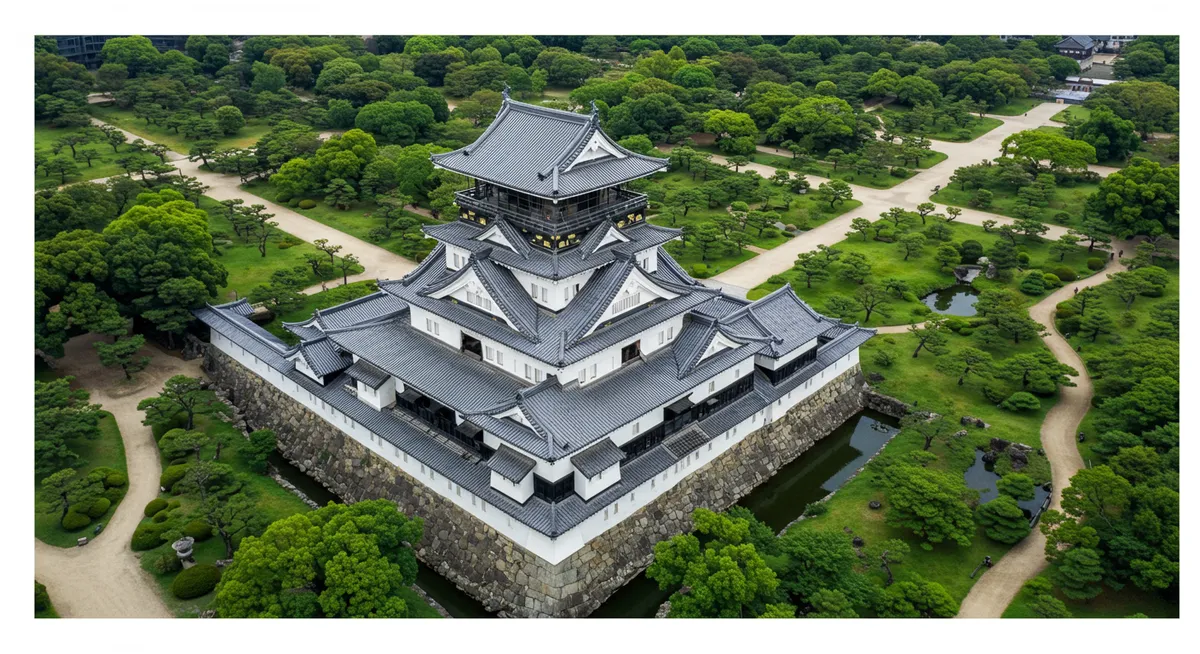
Hiroshima Castles & Gardens: A Travel Guide
Table of Contents
Want to find the best travel deals for this destination? Chat with our travel hacking specialist!
Get Travel HacksCategory: hiroshima-castles-and-gardens
Discovering Hiroshima's Iconic Castles and Gardens
Having personally explored Hiroshima multiple times, I've always been captivated by its blend of poignant history and serene natural beauty. As a seasoned travel writer specializing in Asia, I believe the city’s historical Hiroshima castles and gardens offer equally compelling insights into Japan's rich past and traditional artistry. This guide will help you uncover these beautiful, tranquil spots, providing a deeper understanding of Hiroshima beyond its modern narrative and truly enriching your journey.
Hiroshima Castle: A Symbol of Resilience
Often referred to as Carp Castle (Rijō), Hiroshima Castle stands proudly as a testament to the city's enduring spirit. Originally constructed in the 1590s, the current structure is a faithful reconstruction completed in 1958, following its destruction in 1945. Visitors can explore the five-story main keep, which now houses a museum detailing the castle's history, samurai culture, and life within its walls during the Edo period. From the top floor, I've always appreciated the panoramic views across the city, truly revealing how central this historic fortress once was. Its surrounding moats and grounds offer a peaceful escape, inviting leisurely strolls and a deeper connection to the city's rich heritage, as highlighted in any comprehensive Hiroshima travel guide.
Shukkei-en Garden: Tranquility in the City
Just a short walk from Hiroshima Station, Shukkei-en Garden offers an exquisite contrast to the city's bustling pace. This traditional Japanese garden, whose name translates to 'shrunken scenery garden,' beautifully replicates diverse landscapes in miniature, featuring mountains, valleys, forests, and lakes. Pathways meander around a central pond, dotted with small islands and bridges. I vividly recall the stunning autumn foliage during my last visit, a spectacular display of reds and golds. The garden, originally built in 1620, also suffered severe damage but was meticulously restored, making it a serene oasis today. It's particularly enchanting to experience the seasonal transformations here, which deeply influences the best time to visit Hiroshima.
Exploring the Castle Grounds & Beyond
While Hiroshima Castle's main keep draws attention, allow ample time to wander its extensive grounds. You'll discover the restored Ninomaru (second bailey) structures, including the gatehouse and two turrets, providing a glimpse into the castle's defensive architecture. It's truly fascinating to imagine the daily life within these walls. Beyond the main castle and Shukkei-en, visitors seeking more green spaces might enjoy exploring local parks or considering a broader exploration of the region. For instance, a Miyajima day trip from Hiroshima often includes Momijidani Park, renowned for its maple trees. These diverse natural and historical sites enhance the rich tapestry of Hiroshima castles and gardens, offering varied experiences for every traveler.
Planning Your Perfect Visit
To fully appreciate Hiroshima castles and gardens, strategic planning is key. Both Hiroshima Castle and Shukkei-en Garden are centrally located and easily accessible by Hiroshima's streetcar system. I've found purchasing a day pass for the streetcar incredibly convenient. Typically, both sites operate from 9 AM to 5 PM, with last entry usually 30 minutes before closing, though checking official websites for the most current hours is always wise. Consider visiting early mornings to avoid crowds and experience the tranquility. These sites beautifully complement a visit to the Hiroshima Peace Memorial Park, creating a full day of historical exploration. For more detailed insights into planning your journey, Plan Vacation Asia offers valuable resources.
Frequently Asked Questions
What is the best time of year to visit Hiroshima castles and gardens?
Are Hiroshima Castle and Shukkei-en Garden easily accessible and close to each other?
Besides the castle and garden, what other historical sites should I consider visiting in Hiroshima?
Exploring the Hiroshima castles and gardens offers a profound and enriching experience, blending historical resilience with exquisite natural beauty. From the reconstructed grandeur of Hiroshima Castle to the serene, miniature landscapes of Shukkei-en Garden, these sites provide a vital counterpoint to the city's modern narrative. They offer not just picturesque views but also a deeper connection to Japan's enduring cultural legacy. Don't miss the opportunity to immerse yourself in these tranquil oases, adding a memorable chapter to your Hiroshima adventure.